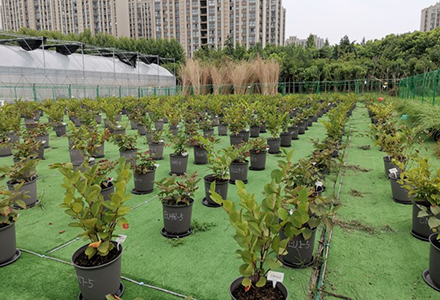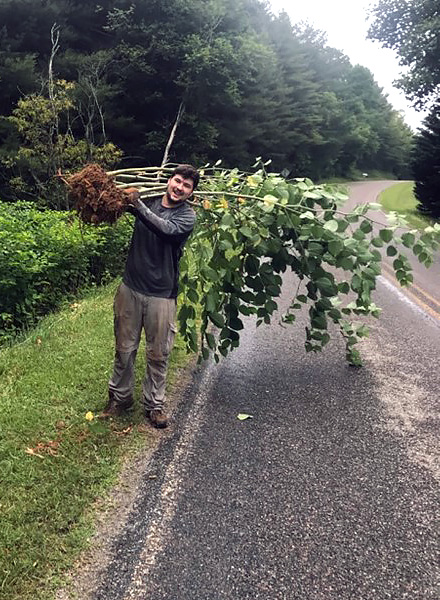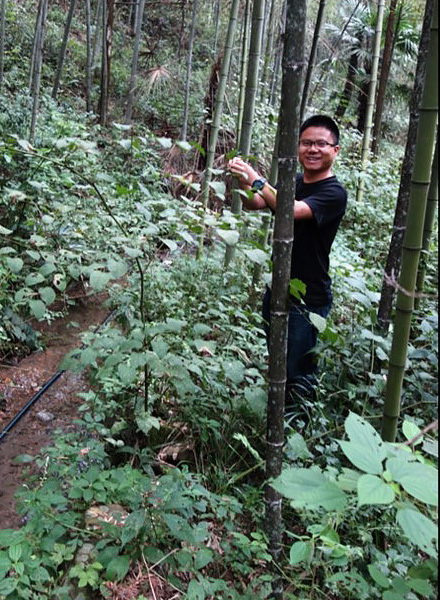By Anna Mayor, USF College of Arts and Sciences

A knotweed garden at Fudan University. (Photo courtesy of Peipei Cao)
Christina Richards, an associate professor of integrative biology in the USF College of Arts and Sciences, co-led a groundbreaking international study that sheds new light on how one of the world’s most invasive species — Japanese knotweed — adapts and thrives across continents.
Using common garden experiments in China, the study analyzed knotweed from 128 populations across China, Japan, Europe and North America.
The goal was to understand how this plant species evolved since its introduction to
Europe and North America from Japan.
“Our international team included researchers from China and Japan, where Japanese
knotweed is native, as well as from Germany and the U.S. where the plant has been
introduced. This enabled us to investigate plants from a large number of populations
in both the native and introduced ranges,” Richards said.
What surprised the team most was how consistently the introduced plants resembled the Japanese plants and differed from the Chinese plants— even though China is also part of the plant’s native range, underscoring that evolutionary changes post-introduction are complex and often misunderstood.
“We were surprised to see that the plants from the introduced ranges look and behave a lot like those from the source in Japan for most traits. One important difference is that they are able to produce even more stems than the Japanese plants now, even though we think it has largely spread by vegetative propagation,” Richards added.
The study illuminates the need to compare invasive plants to their original native sources in order to understand how they've evolved in new environments. The study’s methods will be useful to other researchers looking to identify potential responses of plants introduced to novel environments.
They found that invasive plants grew differently. They were less flexible in most traits but were much better at cloning themselves, an ability Richards said may help them spread so successfully in new places.

Field collection of invasive knotweed in the U.S. (Photo courtesy of Christina Richards)

Field collection of knotweed in a native habitat in China. (Photo courtesy of Zhiyong Liao, Xishuangbanna Tropical Botanical Garden)
“This study emphasizes the role of clonality and its plasticity in the success of invasive species,” Richards explained. “It also highlights the importance of comparing introduced populations to their specific native sources, since plats can vary a lot across their native range.”
Richards emphasized that the success of the research was largely due to cooperative endeavors of colleagues at Xishuangbanna Tropical Botanical Garden (CAS), Yunnan University, Fudan University and the University of Tübingen.
The research was a collaborative effort supported by the National Natural Science Foundation of China, the German Federal Ministry of Education and Research, the German Research Foundation, the CAS President’s International Fellowship Initiative, National Key Research and Development Program of China and Department of Science and Technology of Yunnan Province.
View the full research publication, as published in New Phytologist, for more insights into why invasive Japanese knotweed is so successful at outcompeting native plants.
